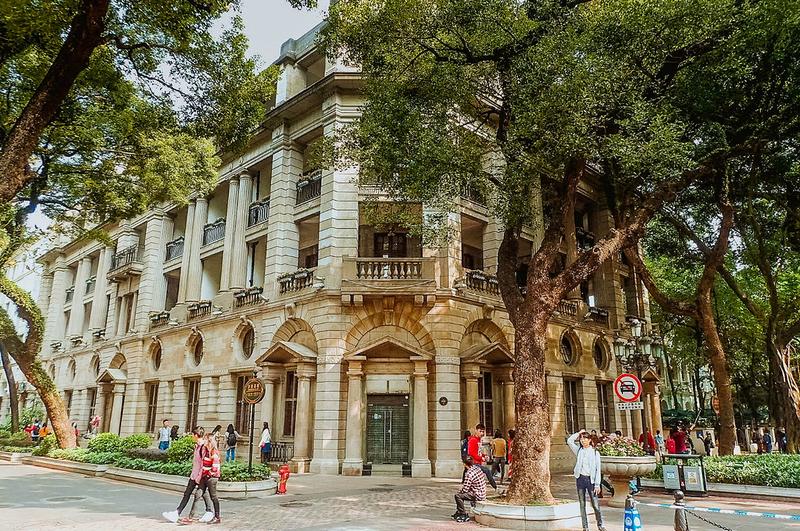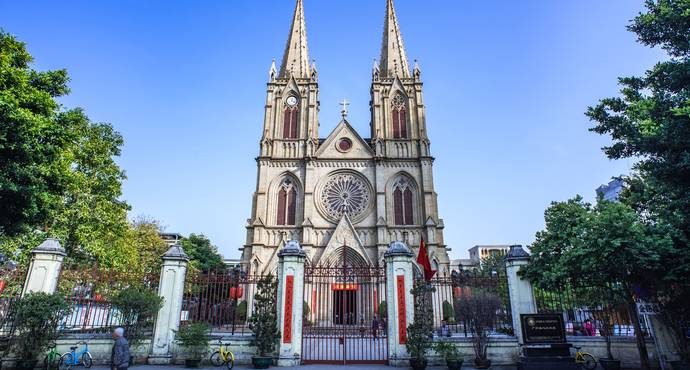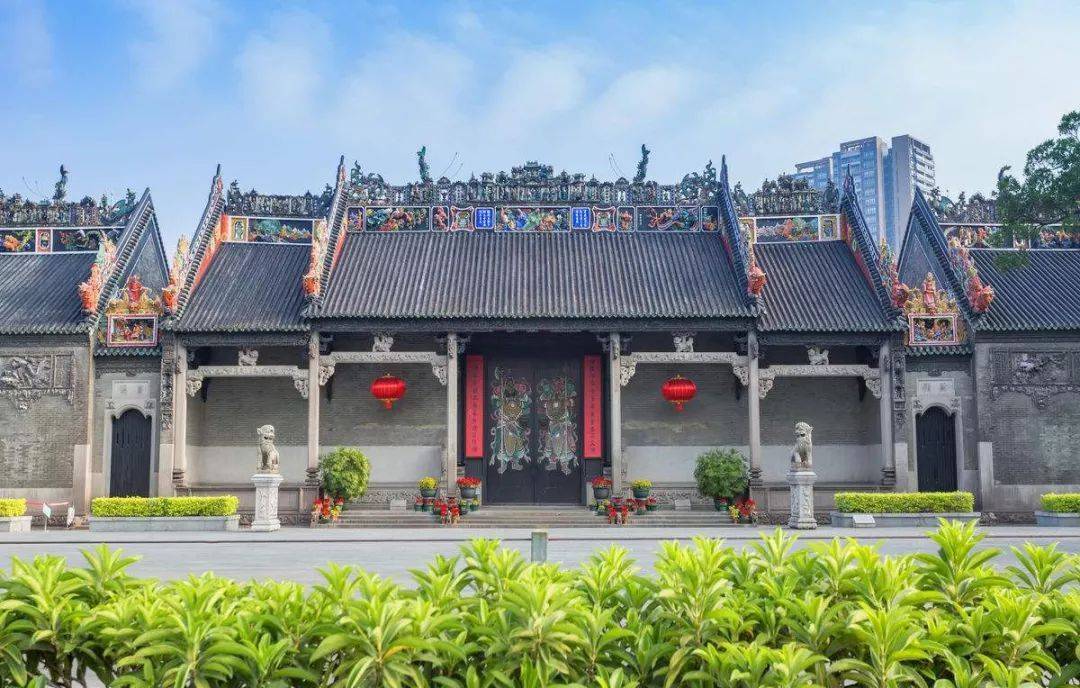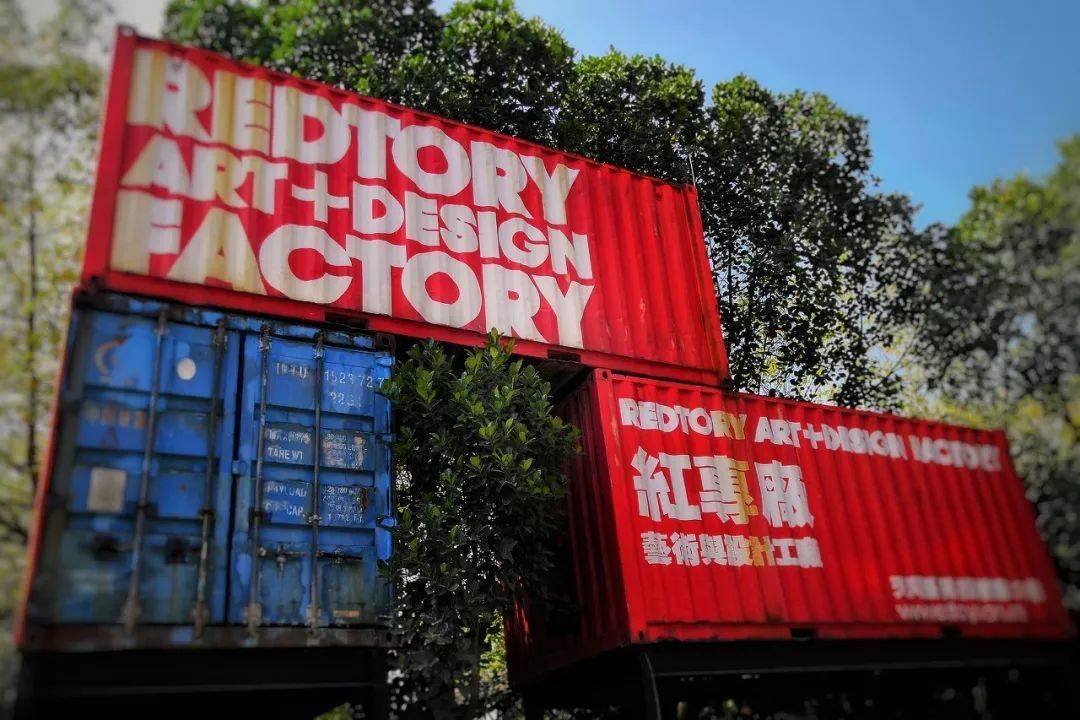Shamian
Shamian was formerly known as Shicui Island. It is located in the southwest of Guangzhou city. It is only 0.3 square kilometers in size and was originally an alluvial island formed by the Pearl River, hence the name. Since the Song Dynasty, Shamian has been a port for Guangzhou's trade with Southeast Asia, witnessing the history of ancient China's exploration of unknown oceans. After the Second Opium War, it became a concession for the British and French.
The Sacred Heart Cathedral in Guangzhou is located on Yide Road in the city center. The foundation stone was officially laid on June 18, 1863, on the Feast of the Sacred Heart, hence the name. It took 25 years to complete and is the most magnificent and distinctive cathedral in the Catholic Diocese of Guangzhou. It was designed by French architects and built by Chinese craftsmen.
Chen Clan Academy, commonly known as Chen Family Temple, is located on Zhongshan Seventh Road in Guangzhou. The Chen Clan Academy is the largest, most beautifully decorated, and best-preserved traditional Lingnan ancestral hall-style building in Guangdong, and is known as the pearl of Lingnan architectural art.
Liwan
In the past, there was a saying in Guangzhou: 'Miss Xiguan, Young Master Dongshan.' Another saying goes: 'The wealthy live in Xiguan, the powerful live in Dongshan, and those with neither money nor power live in Henan.' Xiguan in Guangzhou is a traditional bustling commercial area and a hub of local customs. Lychee Bay is located in the heart of Xiguan.
Whampoa Military Academy
The Whampoa Military Academy was founded in 1924, originally named the 'Army Officer Academy'. It was named after its location on Changzhou Island in Whampoa. Speaking of the Whampoa Military Academy, it is easy to think of the vivid heroic figures in the modern revolutionary history of China. These figures, such as Zhou Enlai, Nie Rongzhen, Ye Jianying, and Chen Geng, who were founding fathers of the People's Republic of China, left their marks of growth and struggle here. For the young people of that era, the Whampoa Military Academy was precisely the stepping stone for the elites of that time to step onto the historical stage.
Huangpu Ancient Port
Huangpu Ancient Port was a window into China's maritime trade during the golden age of the 17th and 18th centuries. It was also a hub for economic and cultural exchanges between China and the West, witnessing the prosperity of the 'Maritime Silk Road.' It is known as the 'First Pass of the Guangdong Sea.'
Haixinsha Asian Games Park in Flower City Square was the venue for the opening ceremony of the 2010 Guangzhou Asian Games. Now, as the new central axis of Guangzhou, it is divided into southern and northern sections by the Guangzhou TV Tower 'Little Waist', stretching a total length of 12 kilometers. The area around Flower City Square is home to the tallest and most bustling modern buildings, including Haixinsha Asian Games Park, the Little Waist - Guangzhou TV Tower, Guangzhou Opera House, the new Guangdong Provincial Museum, and the Guangzhou International Convention Center (West Tower). This is the bustling central area of Guangzhou.
Redtory
Redtory is a place full of petty bourgeois sentiment, suitable for strolling, daydreaming, and sitting idly. The old factory buildings have been transformed into a creative zone, filled with an artistic atmosphere. The industrial metal style, romantic petty bourgeois style, and nostalgic retro style blend seamlessly here, making the old times seem within reach.



















